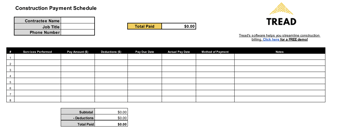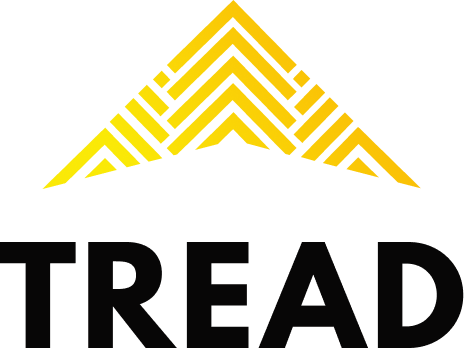Construction billing methods & best practices
The construction industry is notorious for slow payments, costly overhead, and relying on credit to keep a project moving forward. In order to effectively combat these financial mishaps and grow your construction business, you will need to follow through with proper billing practices that guarantee invoice accuracy and faster payments.
This blog will discuss the most common billing methods in construction, list the pros and cons to each, and when they are the best approach. We will also cover the best practices for construction billing that are guaranteed to speed up payments, increase invoice accuracy, and satisfy all project stakeholders.
First, let’s start with construction billing methods:
[Download our eBook: How To Get Paid Faster & Eliminate Payment Disputes]
The most common construction billing methods
The three main billing options in the construction industry include:
- Advanced billing: Billing before the project begins.
- Arrears billing: Billing at the end of the project.
- Progress billing: Billing as the project progresses.
The billing method of any construction contract is a pivotal detail for both parties. Each method carries different risks and advantages for either side and should be consciously considered in negotiations. Project duration and stakeholders should also be considered in every contract when selecting a billing method. More on this below.
1. Advanced billing in construction
Advanced billing in construction is a method where payments are finalized before a project begins — usually in the form of a lump sum payment.
This invoicing practice can be risky for the stakeholders in charge of the project. Advanced payments mean they are putting a lot of trust into the parties responsible for working on the project.
This method can also be risky for the contractor involved in the build, as projects often run over budget. If this is not accounted for in the initial construction contract, vendors may end up working for free in order to complete the project.
Advanced billing in construction is ideal for parties that have worked together for a long time and have established a long-standing relationship, where project timelines have often been on-time and on-budget in the past. It is also best for project durations that are shorter in length. Longer projects that could take years to complete.
2. Arrears billing in construction
Arrears billing in construction is the process of billing at the end of a project. Payment is sent out as a lump sum once all stakeholders have signed off and approved the final product.
This billing method can be especially risky for the contractor as the construction business is essentially floating the costs of the job. Contractors will have to pay out of pocket for materials and labor and count on their clients to pay fully and on time. However, it’s common for payments in the construction industry to take weeks or months to be sent out.
The arrears billing method is an ideal choice for construction businesses looking to build trust with new clients and who have strong cash flow. Like the advanced billing method, arrears billing is also best for projects that are expected to be shorter in duration.
3. Progress billing in construction
Progress billing in construction is the invoicing practice of billing incrementally throughout a project. More complicated than billing before the project begins or after a project ends, progress billing invoices are created based on the percentage of completion of work to-date. Payments are made at agreed points in the project completion.
Beyond the basic project details (like date, percentage complete, etc.), progress billing contracts should also include terms that the client and contractors should agree on before the work begins. One term that should not be excluded is a payment schedule. A payment schedule will outline the details for when invoices should be submitted and paid and should be clearly stated and agreed upon before the project gets underway.
Progress billing allows those who are billing (usually contractors) to get paid in regular intervals as the project progresses. That means that contractors are out-of-pocket for shorter periods of time. Rather than exhausting their reserve funds on labor and materials, progress billing helps to top-up reserves and keep financials healthy.
Progress billing is also positive for clients. This invoicing practice creates a strong financial incentive for contractors to hit milestones on time and meet specifications before they receive payment.
The progress billing method is ideal for major construction projects that are lengthy and typically have big budgets.
How is progress billing calculated?
There is no universal method for calculating progress billing; however, the most common formula used is when the percentage of work completed is applied to the total contract price.
Payments might be spaced out based on specific project milestones along the project timeline. For example, when 10% of the project is complete, the client pays 10% of the total contract amount. These milestones should be agreed upon in advance by all parties and written into the construction contract. The final payment should cover the remaining balance of the project once the client has signed off on the work.
Best practices for construction billing
Now that we’ve covered the three methods of billing in construction, let’s discuss the best practices that should be followed in construction billing to make for a better working relationship with all parties involved.
- Send invoices on time
- Ensure invoices are clear and accurate
- Practice short payment terms
- Incentivize early payment and penalize late payments
- Follow-up on invoices
- Write back charges into the contract
- Use the right software
1. Send invoices on time
This seems like a simple practice but sending timely invoices is not always done. When invoices are sent late, payments are almost always going to arrive late as a result.
If your invoices are regularly being sent out late, perform a quick audit to identify why that is. Are job details getting lost? Are contractors and subcontractors submitting their invoices late? If so, look into a paperless option for managing construction invoices to help speed things along.
2. Ensure invoices are clear and accurate
Beyond sending invoices on-time, it is essential to make sure they are also clear and accurate to avoid disputes.
Unclear invoices could be a result of illegible writing or a lack of detail. Inaccurate invoices can result from lost or misplaced time tracking sheets that were then estimated for invoicing purposes or when tracking job details manually by pen and paper. All of these discrepancies can result in disputes among vendors.
The best way to avoid this type of friction is by moving all project tracking online. Using software that tracks construction vehicles through GPS or logs operator hours digitally is a great place to start. Bonus points if the online data is visible to all parties so discrepancies can be avoided completely by everyone being on the same page.
3. Practice short payment terms
Keeping payment terms short, yet reasonable, is a great approach to construction billing. Longer payment terms lead to higher debt ratios which can be detrimental to a company’s finances.
Consider implementing 30-day payment terms to your project billing. This is a firm yet generous payment term that all parties should be able to adhere to.
4. Incentivize early payment and penalize late payments
More than keeping payment terms short and fair, look outside of the terms. If payments are being received early, reward this courtesy. Make paying you as easy as possible. Consider offering financing options and digital payment options. In an industry where late payments are not uncommon, adding a discount for payments received in full prior to the due date is a smart choice.
On the flip side, it is important to acknowledge late payments as well. Penalties could be considered when it comes to construction billing practices. Adding a fee for late payments is an effective way to incentivize timely receivables.
5. Follow-up on invoices
If your payment is late and you have no indication that payment is on its way, don’t be afraid to check-in. Invoices can easily get missed, lost, or forgotten, so sending a quick ping to follow-up and see how things are going on their end will not hurt.
We recommend sending an email first so there is a timestamp on this initial communication. If you do not hear back within a couple of days, try contacting them by phone.
You don’t have to wait until your money is late to follow up. Maintaining open communication with your clients and reminding them about a due payment before it’s late can be extremely helpful for construction accounting.
6. Write back charges into the contract
Back charges are very important contractual rights to have written into a construction contract. They protect contractors and subcontractors from having to pay out of pocket for expenses that they wouldn’t otherwise have to cover.
What are back charges in construction?
A back charge, sometimes referred to as a right to set-off, is an offset for unexpected costs incurred on a construction project. These costs can be offset by a number of different things including defective work or materials, damage to a job site, clean-up requirements, or unexpected or forced use of equipment.
For example, if a general contractor had to pay out of pocket to correct defective work or clean up a job site because the supplier did not do the job properly, these additional costs would be classified as back charges. When back charges are included in construction contracts, additional costs like the one in the example are taken out of the responsible party’s next payment. This off-sets the initial, unexpected cost and balances everything out fairly.
7. Use the right software
Using the right software can drastically improve your construction billing process. Look for software that is made specifically for the construction industry. This ensures the functionality and features included will be tailored to your needs.
Ideally, your construction billing software will include:
- Digital invoices and sign-offs
- Job pausing capabilities
- Online timesheets and tracking capabilities for material haulers
- Cloud-based invoice management that is accessible to all vendors
Tread’s software for construction billing
Tread is a construction fleet management and dispatch software that speeds up invoicing and settlement processes. Tread helps facilitate faster money transfers on load-based and time-based jobs.
Tread’s software is ideal for construction companies that practice the progress billing method. Since this method requires accurate, verifiable billing information, Tread offers just that with instant, digital access to tickets and timesheets to avoid disputes and keep projects moving smoothly.
Here’s what Tread’s construction software includes:
- Field-generated tickets, timesheets, and live-tracking capabilities for material haulers
- The ability to approve and sign off on tickets and timesheets
- The ability to share digital proof-of-work with clients and subcontractors instantly
- An audit trail of the changes made to tickets and timesheets
- Job pausing capabilities
- The ability to export data as a .csv file for further analysis
- The ability to export ticket and timesheet images to attach as proof-of-work on an invoice/settlement
- The ability to export your proof of work to an accounting system (like Sage, Quickbooks, etc.) for invoice and settlement generation.
If you’d like to learn more about Tread and how our software can work for your construction company’s billing needs, request a demo. We’d be happy to walk you through a customized presentation on the product and its various features.
Read On

What Is Construction Fleet Management?
Managing a construction company comes with many challenges. Some of the most common issues include...

Construction Payment Schedule Template [Free Download]
The nature of construction often means that subcontractors are spending money on materials and...

The importance of data analytics in construction
It feels like every week there’s a new story on the news about how technology is advancing a...

